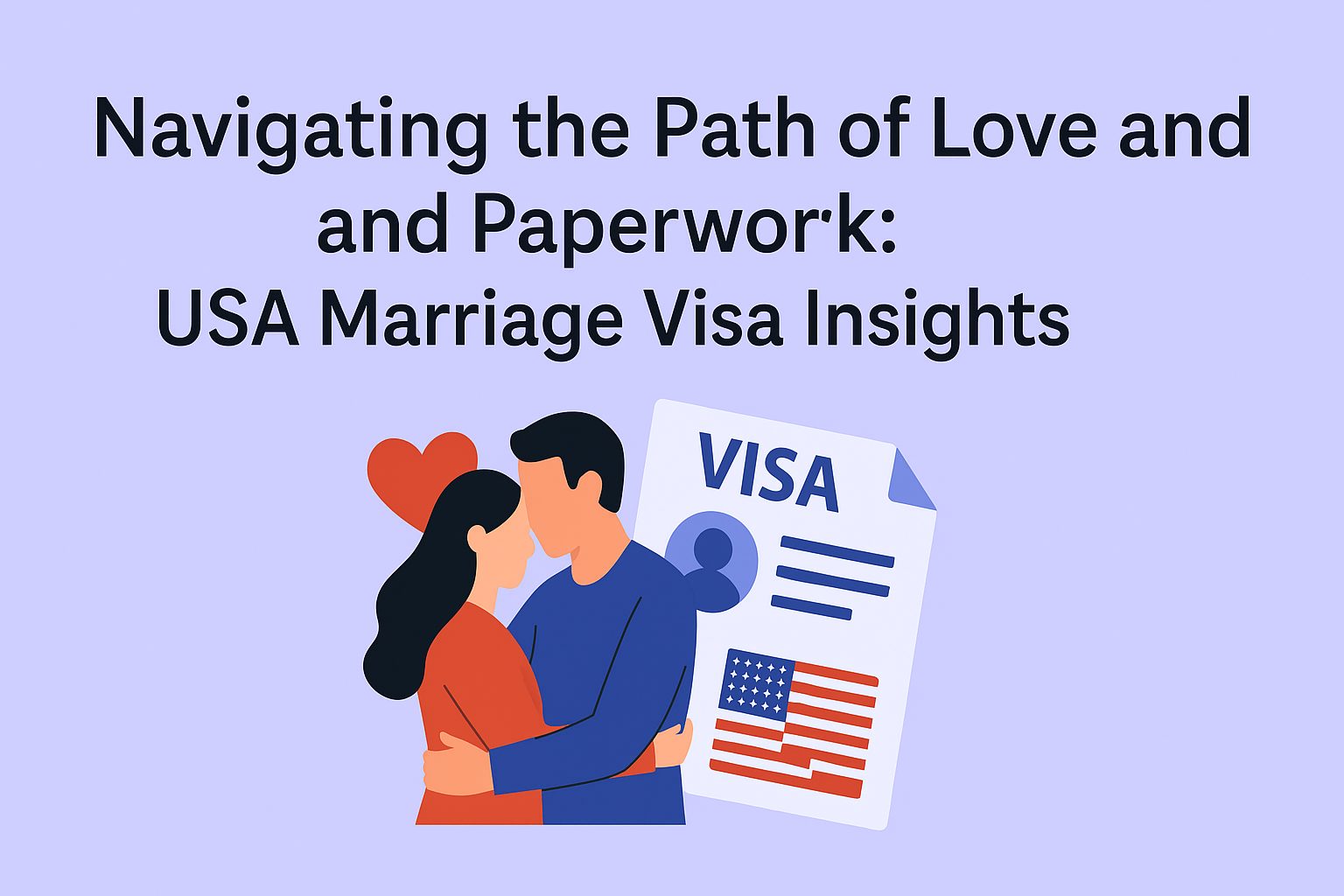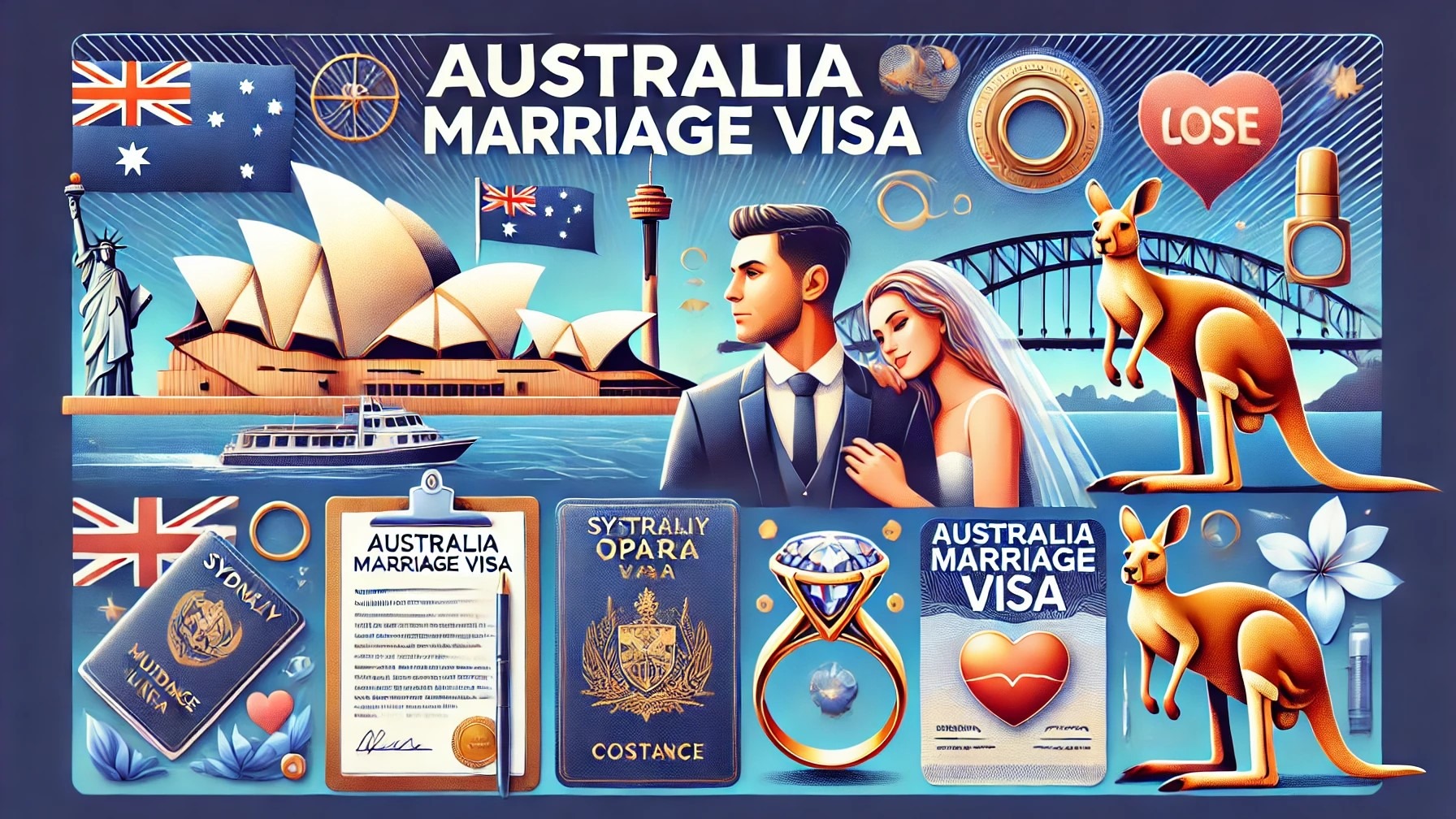Love Without Borders: The Emotional Start
Love knows no boundaries, but immigration laws certainly do. For couples who find themselves in love across borders, navigating the USA marriage visa process can feel like a daunting task. Whether your relationship blossomed online, during travels, or through cultural connections, bringing your partner to the U.S. for good involves a blend of love and legalities. This journey calls for patience, commitment, and a solid grasp of the immigration system. It’s not just about emotions—it’s about demonstrating a genuine and legal bond.
Choosing the Right USA Marriage Visa
When it comes to applying for a USA marriage visa, couples typically have two main options: the K-1 fiancé visa or the CR-1/IR-1 spouse visa. The K-1 visa allows a U.S. citizen to bring their foreign fiancé(e) to the United States, with the requirement that they tie the knot within 90 days of arrival. On the other hand, the spouse visa (CR-1 or IR-1) is for couples who are already married and want the foreign partner to immigrate directly as a permanent resident. Deciding which route to take depends on the timing of your relationship, where you are, and your long-term goals. Each option has its own set of requirements, timelines, and costs.

The Paperwork Begins: Forms, Proof, and Patience
The marriage visa process kicks off with filling out several forms, like Form I-130 for spouse visas or Form I-129F for fiancé visas. But the paperwork doesn’t end there. USCIS requires proof of a genuine relationship. This can include shared photos, travel tickets, chat logs, joint bank accounts, and even personal letters. Every piece of evidence should clearly demonstrate that your relationship is real and ongoing. Immigration officials are trained to spot fraud, so even minor inconsistencies can lead to delays or denials in the visa process.
When it comes to the USA marriage visa process, one crucial aspect is demonstrating financial responsibility. The U.S. citizen needs to fill out an Affidavit of Support (Form I-864) to show they can support their spouse financially. This step is essential to ensure that the immigrant won’t rely on public assistance. If the citizen’s income falls short, they can enlist a joint sponsor to help out. The financial documentation typically includes tax returns, job letters, and bank statements. Navigating this part of the process can be just as emotional as it is technical, often requiring support from family or friends.
Interview Phase: Proving a Genuine Relationship
Once the documents are approved, the foreign partner will attend a visa interview at the U.S. embassy or consulate. This is a pivotal moment in the process. During the interview, questions will be asked to confirm the authenticity of the relationship—like how you met, what you enjoy doing together, and how you interact with each other’s families. For those applying for a K-1 visa, it’s also necessary to demonstrate plans for a quick marriage. If the answers seem inconsistent or rehearsed, the officer might question the relationship’s legitimacy. Couples should approach this interview with honesty and confidence, as being well-prepared can significantly influence the outcome.
The Waiting Game: Processing Times and Emotional Toll
Processing times for visas can vary widely based on the type of visa, the workload of the service center, and the applicant’s home country. While some couples might find themselves waiting around six months, others could be in for a wait of over a year. The emotional strain of being apart can really impact mental health and the relationship itself. Dealing with time zone differences, travel restrictions, and the challenges of long-distance love is common. Many couples lean on video calls, texts, and social media to keep the connection alive. Although this waiting period can be tough, it often serves as a significant test of love and patience.
Cultural and Legal Challenges Along the Way
Couples from different backgrounds often encounter their own set of challenges, like language barriers, differing religious beliefs, and family expectations. In some cultures, dating or living together before marriage is frowned upon, which can complicate the process of proving a relationship. In these situations, couples might share letters of intent, wedding plans, or even statements from friends and family to demonstrate their commitment. The important thing is to express genuine dedication in ways that align with both cultural and legal norms.
Why Legal Help Matters in Marriage Visa Cases
While it’s not mandatory to hire a lawyer, many couples find it beneficial to consult with a U.S. immigration attorney. These legal experts can help steer clear of common pitfalls, prepare solid documentation, and make the whole process smoother. Even a tiny mistake on a form can lead to rejection or delays. Plus, immigration laws are constantly changing, and a lawyer can keep you informed. Just one consultation can really help make the entire experience less overwhelming.
Life After Visa Approval: What Comes Next?
Once the visa gets the green light, the real adventure begins! The foreign partner arrives in the U.S. and starts adjusting to a brand-new life. For those on a K-1 visa, marriage needs to happen within 90 days, followed by filing for Adjustment of Status to secure a green card. For spouse visa holders, a green card is granted upon entry. Eventually, the immigrant spouse may be eligible to apply for U.S. citizenship. Each step presents its own challenges, but also brings new joys—like finally living together, celebrating important milestones, and building a shared future.
Building a Home Beyond Borders
It might seem strange to think of love and paperwork going hand in hand, but for couples navigating the U.S. immigration system, they are intricately linked. The marriage visa process in the U.S. isn’t just a legal procedure; it’s a love story told through forms, stamps, and sacrifices. It’s about two people determined to be together, no matter the distance. Although the journey can be long and at times frustrating, it ultimately leads to the beautiful reward of sharing a life under one roof. Together, couples can create a home that transcends borders.
Final Thoughts: Love, Patience, and the American Dream
Navigating the marriage visa process in the USA is a journey filled with emotions and procedures. It takes love, patience, and a steadfast commitment to creating a life together—no matter how daunting the paperwork, waiting times, and interviews may seem.
Whether you’re applying for a K-1 fiancé visa or a CR-1/IR-1 spouse visa, the heart of the matter lies in the authenticity of your relationship. Immigration laws can be tricky, but when true love is backed by honest documentation and sincere effort, it can break through any obstacle.
Ultimately, it’s not just about relocating to the U.S.—it’s about crafting a home, envisioning a future, and living out your dreams with the one you cherish. With the right preparation, support, and a sprinkle of hope, love really knows no boundaries.
FAQs About USA Marriage Visa
Q1: What’s the best option for applying for a USA marriage visa—K-1 or spouse visa?
Answer: If you’re not married yet, the K-1 fiancé visa is your best bet. But if you’ve already tied the knot, then the CR-1 or IR-1 spouse visa is the way to go. Each of these visas comes with its own timeline, requirements, and application process.
Q2: How long does it take to get a USA marriage visa?
Answer: Generally, a K-1 visa takes around 6 to 12 months to process, while a spouse visa can take anywhere from 10 to 18 months, depending on how busy USCIS is and where the applicant is from.
Q3: What documents are needed for a marriage visa application?
Answer: You’ll typically need the following documents:
- – Valid passports
- – Birth certificates
- – Marriage certificate (if applying for a spouse visa)
- – Proof of a genuine relationship (like photos, chats, and emails)
- – Affidavit of Support (Form I-864)
- – Police clearance certificate (for the foreign spouse)
Q4: Can a marriage visa be denied?
Answer: Yes, a marriage visa can be denied if it looks like the relationship isn’t genuine, if your documents are missing, or if your answers during the interview don’t match up. Being honest and providing thorough documentation is crucial.
Q5: What happens after the marriage visa is approved?
Answer: If you have a K-1 visa, you need to get married within 90 days of arriving in the U.S. and then apply for Adjustment of Status to obtain a green card. For those with a spouse visa, you’ll receive your green card upon entry and can apply for U.S. citizenship after 3 to 5 years, provided you meet the eligibility requirements.



